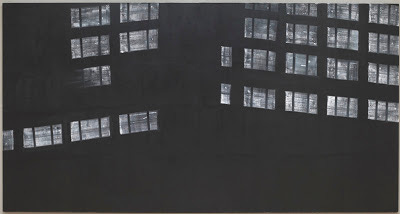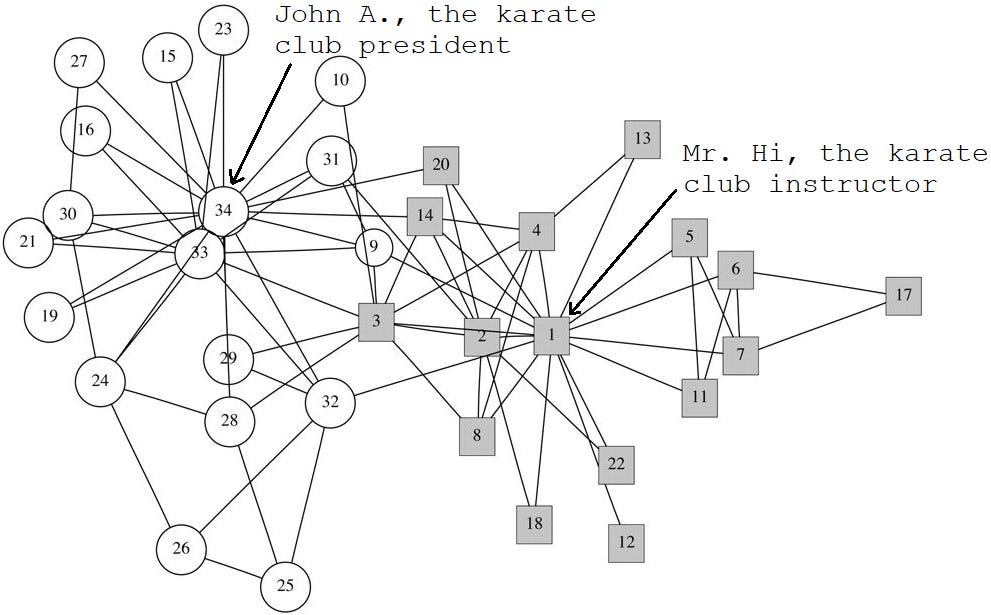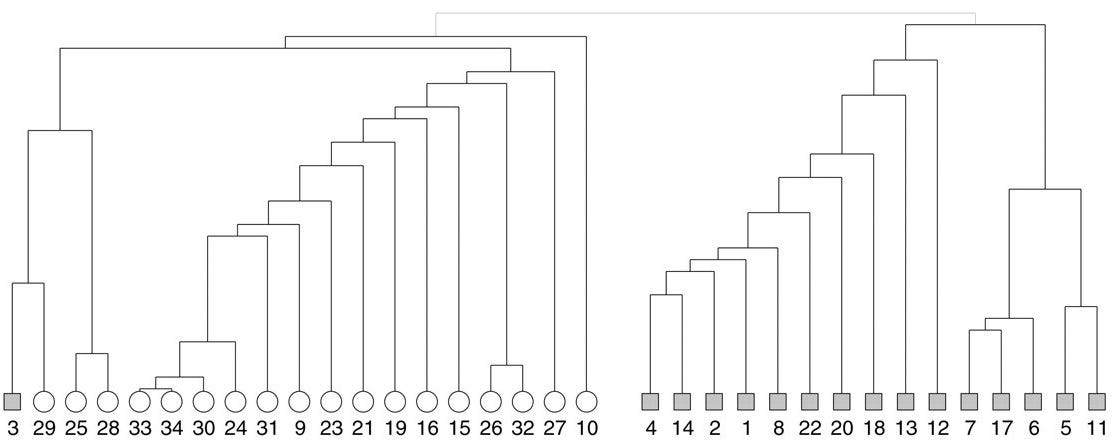a vision
…
4. Do you ever smoke weed, stare at your face in the mirror, listen to music on your AudioTechnica ath-m50xs and contemplate the essence of the age? What does it even mean to be alive right now? I ponder this question as I gaze into my own blue eyes and the Dazegxd pounds in my ears. I look at my eyebrow scar, remembering how I got it when me and my dad were playing catch in the park but I missed one time and just let the baseball hit my eye like a dumbass. For some reason I feel like this must be what defines the present time.
5. By far my most listened to song in 2022 was Dazegxd’s emotion engine feat. kaiyko (powerdoll redux). I like the original emotion engine too, but it’s the powerdoll redux in particular that has wedged itself so deeply into the folds of my brain. I’ve listened to this song so many times I’ve begun developing bizarre visual associations with it. It begins with a brooding build up, kaiyko’s dreamy vocals soaring over the chunky electric pounding synths, and a vision comes to me: I’m gazing at the city skyline at night from high above the river, an ocean of indistinct twinkling dots smeared like watercolors against the backdrop of the night. I think it might be the view from the pedestrian path of the Williamsburg bridge, but it’s blurry enough that I can’t really tell. Plus I’m not actually standing on a bridge; there is an ascending column of digitized sonic energy keeping me vertically suspended in the air like I’m standing in a wind tunnel. When the beat drops, the pulsating crackles blur my vision even further, degenerating almost into visual noise while the sonic wind accelerates and I begin soaring higher and higher. But ascending to a higher view does not feel particularly triumphant, if anything it evokes a sense of yearning—a reminder of the burning sensation that remains festering in the depths of my soul. The electric column of sound supporting me also seems to be quite brittle. It gives way slightly, suddenly jolting my body at an angle, making the buildings fly out of my vision like they’re slipping away and careening towards some nonexistent future.
The vision reminds me a bit of artist Alex Katz’s use of light. I recently saw Alex Katz: Gathering at the Guggenheim Museum, a retrospective exhibit showcasing work from Katz’s entire career, and many of Dazegxd’s electric sonic flourishes remind me of Katz’s depictions of light. Katz’s use of aggressively full blocks of color over some more dispersed shading effect seem similar to the full bodied brilliant splotches of digital miasma Dazegxd paints onto his songs. In particular the vision of blurred city lights while soaring over the sea feels reminiscent of the Katz painting “West 2,” shown above. The painting is a minimalist depiction of a city building, with simple white brushstrokes representing lit windows at night. Dazegxd’s music sounds like these electric slabs of light to me. But the visual rhythm of the windows is interrupted by the incomplete one on the center left, a half-finished brushstroke bleeding into the black ink of the night. The half-finished window feels like a reminder of the blurred line between digitality and reality, much like how Dazegxd’s chunky flecks of congealed digitality explode like some futuristic ion bomb in my ears whose shrapnel fades like a gradient into the dark haze of my mind.
The brittle reality shattering sensation I feel listening to this song, sonic realities simultaneously being constructed and destroyed, also seems reminiscent of certain algorithms from network science. Any system of elements whose interactions can be modeled as discrete connections between them are studiable as a network, from protein interaction networks (9), transportation networks (10), local music scenes (11), or users on social media platforms (12). Many real life networks exhibit significant “community structure,” where nodes tend to be more predominantly connected to a certain subset of nodes, or community. A significant body of research is devoted to the problem of “community detection,” the algorithmic identification of communities in a network. A common example used in the study of community structure is the Zachary karate club network, a group consisting of 34 members of a karate club observed over a period of 3 years from 1970 to 1972 (13), with node connections representing friendships between members. Over the course of an anthropological study of the club, a disagreement emerged between John A., the club’s president, denoted by node 34 in the network diagram below, and the club’s instructor Mr. Hi, denoted by node 1:
Mr. Hi wanted to raise prices for lessons, claiming authority to do so because he was the club’s president, while John A. pushed back on the price increase, claiming authority as the club’s chief administrator. This disagreement eventually led to John A. firing Mr. Hi, whose supporters decided to break away and form their own group. M. Girvan and M. E. J. Newman evaluated their novel community detection algorithm based on its ability to predict which group each member eventually joined, whether sticking with the original club’s administration headed by John A. or leaving with Mr. Hi’s splinter group, based solely on the friendship network that existed prior to the schism (14). As it turns out, processes of social fission such as these generally tend to cleave along existing friendship networks, and Girvan and Newman’s algorithm accurately predicts the split (with the exception of node 3). Furthermore, Girvan and Newman’s algorithm does not simply place each node into a bucket, but instead retrieves an entire community hierarchy, represented by the dendrogram below:
A community hierarchy can be useful in community detection, because oftentimes it may be more interpretable to see community structure not as some flat categorization scheme for which a node does or does not belong, but rather a nested hierarchy where communities are allowed to have subcommunities within them. For example, nodes 5, 6, 7, 11, and 17 are only friends with each other and Mr. Hi, therefore falling on Mr. Hi’s side of the karate club schism, but clearly representing a meaningful pocket within that group, which is a level of structural nuance not retrievable with a non-hierarchical community detection algorithm. Analogous to the similar split among clustering algorithms (15), there are actually two classes of hierarchical community detection algorithms: agglomerative algorithms, which function through a more “bottom-up approach” by taking individual nodes in a network and merging similar ones together and forming larger and larger communities until an entire community hierarchy is retrieved; and divisive algorithms, which operate through a more “top-down approach” starting with the entire network placed in one group and progressively dividing it into smaller and smaller chunks.
Viewing the city from high up atop my perch, it finally dawns on me that what I thought was a vertical column of digitized noise supporting me is actually a dendrogram. Somehow I have managed to ascend to this height atop the output of a hierarchical community detection algorithm —this must also explain the brittleness. But exactly which type, whether an agglomerative or divisive one, I can’t quite tell. The song sounds like both an act of agglomeration and division, particularly through the brooding build up in the beginning, rising through the sonic miasma forming networked communal structures of noise from the ground up, an illusion that is destroyed when the beat drops, the ebullient splotches of sound crackling through the air divisively breaking down my sense of reality. It is this musical interplay with network structure that makes this song so interesting to me, creating sonic hierarchies through the contradictory processes of agglomeration and division, reflections of a techno-scientific rationalization of the social world.
…
9) Jordán, Ferenc, Thanh-Phuong Nguyen, and Wei-chung Liu. “Studying Protein–Protein Interaction Networks: A Systems View on Diseases.” Briefings in Functional Genomics 11, no. 6 (November 1, 2012): 497–504. https://doi.org/10.1093/bfgp/els035.
10) Háznagy, Andor, István Fi, András London, and Tamás Nemeth. “Complex Network Analysis of Public Transportation Networks: A Comprehensive Study.” In 2015 International Conference on Models and Technologies for Intelligent Transportation Systems (MT-ITS), 371–78, 2015. https://doi.org/10.1109/MTITS.2015.7223282.
11) Cheong, France, and Christopher Cheong. “Social Media Data Mining: A Social Network Analysis Of Tweets During The 2010-2011 Australian Floods.” PACIS 2011 Proceedings, July 9, 2011. https://aisel.aisnet.org/pacis2011/46.
12) Crossley, Nick. “The Man Whose Web Expanded: Network Dynamics in Manchester’s Post/Punk Music Scene 1976–1980.” Poetics 37, no. 1 (February 2009): 24–49. https://doi.org/10.1016/j.poetic.2008.10.002.
13) Zachary, Wayne W. “An Information Flow Model for Conflict and Fission in Small Groups.” Journal of Anthropological Research 33, no. 4 (December 1977): 452–73. https://doi.org/10.1086/jar.33.4.3629752.
14) Girvan, M., and M. E. J. Newman. “Community Structure in Social and Biological Networks.” Proceedings of the National Academy of Sciences 99, no. 12 (June 11, 2002): 7821–26. https://doi.org/10.1073/pnas.122653799.
15) Roux, Maurice. “A Comparative Study of Divisive and Agglomerative Hierarchical Clustering Algorithms.” Journal of Classification 35, no. 2 (July 2018): 345–66. https://doi.org/10.1007/s00357-018-9259-9.





